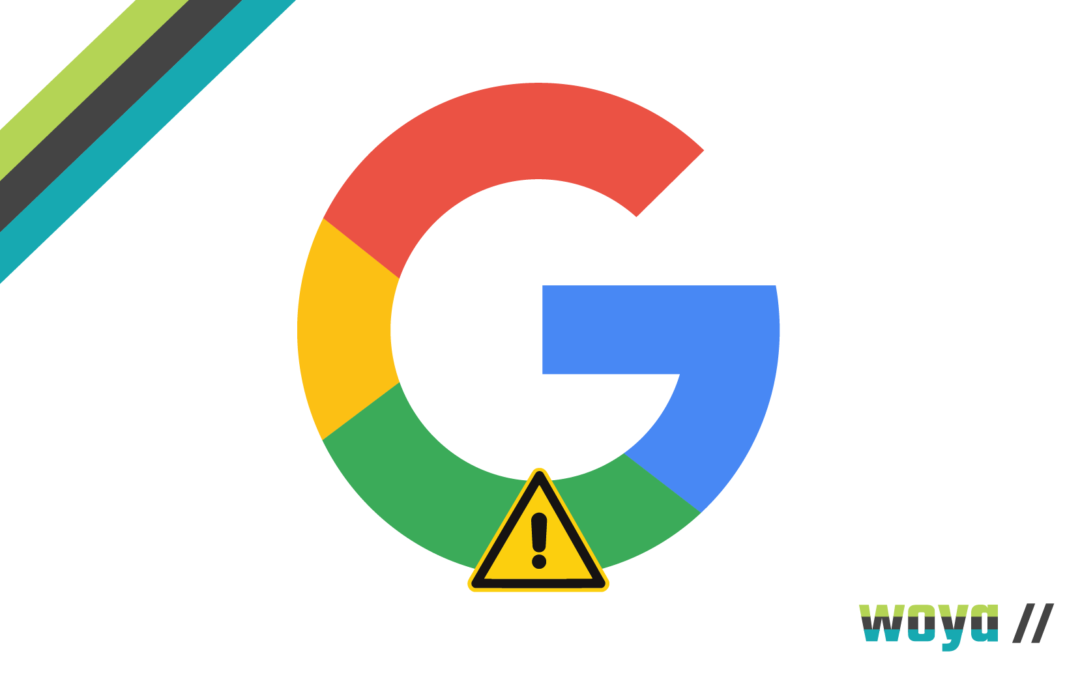It’s very rare for a website not to be reliant on Google for traffic, and with 5.6 billion searches a day through the site, organic search is a critical channel for almost every domain on the internet.
This makes it imperative for those responsible for managing websites to ensure that they understand the latest Google updates and algorithm changes, and that they shift and shape their web presence to meet its needs. If they don’t, they may be hit with a Google Penalty – and this is to be avoided at all costs!
What is a Google Penalty?
A Google Penalty is a theoretical tag linked to a website that negatively impacts its SEO rankings. This means that its organic position on SERPs (Search Engine Results Pages) is lowered from a previous position, or un-indexed entirely. The exact impact of the penalty varies and the combination of factors for this new position is unknown.
A Google Penalty is inflicted on a website when the algorithm picks up on an aspect of the site that doesn’t meet its preferences or terms and conditions. This may be the usage (or suspicion) of black-hat SEO tactics, loading speeds that don’t meet the algorithm’s preferences, or the publication of poor-quality content that doesn’t reach the minimum required standard.
Why Do Penalties Happen on Google?
Google’s mission is “to organise the world’s information and make it universally accessible and useful” and to deliver users with the most appropriate and accurate search result for their query every time. It’s for this reason that they update their algorithm continually; to ensure that they’re able to provide the most relevant query at the top of every user’s search, integrating new smart-learning and tech into their programming to refine this.
Of course, few businesses operate entirely isolated from other competition or resources. So, on top of the accuracy of the content presented, Google also ranks on SEO factors such as security and speed to present sites that deliver a positive user experience as well as pertinent information. This acts as a differentiator for similar or competing websites and further refines the search results.
How to Identify a Google Penalty
Most website owners will recognise a Google Penalty when they spot a significant drop in their ranking positions or organic traffic levels amongst their analytics figures.
Traffic does fluctuate (in some industries more than others; particularly seasonally) and so it is unrealistic for businesses to assume this would be in a continually upward trend without significant intervention and work, but a decrease, providing there is no change in effort, often highlights an issue.
There are Google Penalty identification tools available online which can help diagnose where and when a website was hit with a penalty, but these tend to only focus on major algorithm updates – presenting the best possible estimation for when the penalty was installed. This provides an indication of which update is responsible for the change but is unlikely to identify exactly which one.
With Google implementing a change or two to its algorithms every week, it can be exceptionally difficult to find the exact issue. It is always recommended that websites owners work with SEO experts to properly understand whether their declining SERP position is a result of poor SEO practice, misdirected digital marketing efforts, or a full Google Penalty.
Why Does Google Issue Penalties?
In order for Google to achieve its mission, it needs to present the safest, most relevant websites with the best user experiences to its users.
Issuing Google Penalties allows for those it doesn’t believe to meet their standards to still be present on the SERPs but not to be presented as priority; not compromising on their conduct or quality but still allowing their users to make an informed decision as to which links to click and which websites to visit.
How To Correct a Google Penalty
The scope of every Google Penalty varies and an SEO specialist will be able to advise on the best course of action to take.
Generally speaking, remedial action should be taken immediately to remove or change the offending issue. If content has been stuffed with keywords, these should be deleted and replaced with high-quality genuine copy. If loading speeds are too slow, visual content should be reduced and speeds improved. Whatever the issue, it should be tackled directly as quickly as is possible – but not without compromising any residual quality that may remain on the site.
It is always better to take the time to do it right than it is to do it quickly and still not enhance the quality of the overall domain.
If black hat SEO tactics have been used, remedial action may be more difficult than a quick fix. In these instances, a fresh and comprehensive SEO strategy will need to be implemented over a long-term period with a specialist and continued focus.
Once the webmaster believes the issue to be fixed, a new indexing request can be made to Google using its Search Console facility and fetch and render tool. This requests that when the Google algorithm has capacity, it will re-crawl the site and judge it again to re-assess its ranking position. This should re-position the site if improvements have been made but if the Google Penalty is severe, further action may still be required.
Get Help with Google Penalties
Woya Digital employs a team of SEO specialists who make it their professional business to keep up-to-date with all of Google’s algorithm tweaks; be it a small change or a major full update. This ensures that the team are able to not just identify when and why a Google Penalty has occurred, but also how best to rectify the issue and continue on from a newly strengthened SEO position, presenting competitive advantage and increased business exposure.
For all your website support and SEO needs, get in touch with us!

